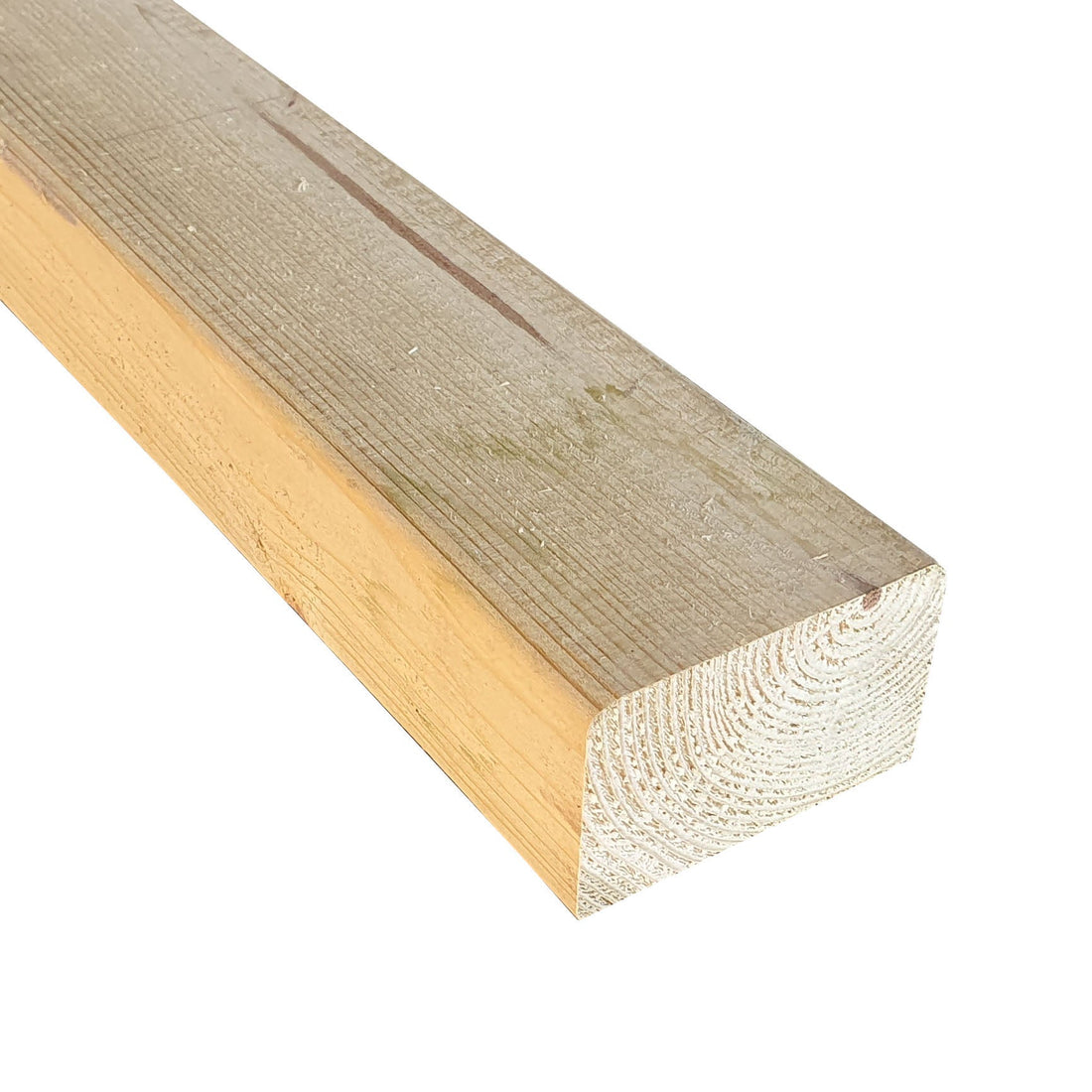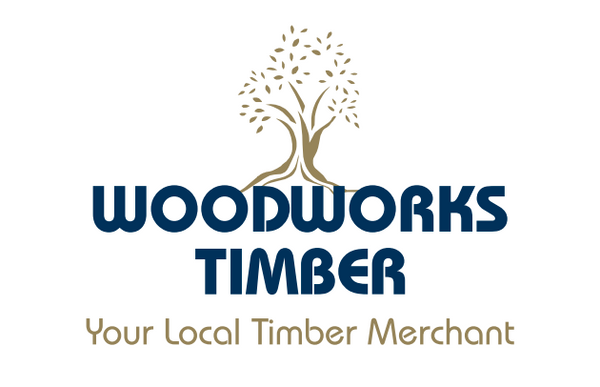
How to Stop Timber Warping After Delivery
Share
Introduction
There’s nothing worse than investing in beautiful, high-quality timber, only to discover a week later that the once-straight boards are now bowed, cupped, or twisted. Suddenly, what looked like the perfect material for your project feels like wasted money.
If you’ve experienced timber warping after delivery, you’re not alone. Warping is one of the most common timber complaints among builders, carpenters, and DIYers. But here’s the good news: most of it is preventable.
At Woodworks Timber, we know that our job doesn’t stop at supplying premium timber. We also want to ensure you get the best performance from every board, joist, or beam you buy. This guide is designed to help you understand why timber warps, how to store it correctly, and what to do if warping starts.
Think of it as your no-warp survival guide - blending professional best practice with down-to-earth, actionable steps you can use straight away.
What Is Timber Warping?
Warping is when timber bends or twists out of its original shape. This can take several forms:
-
Bowing – a gentle curve along the length of the board.
-
Cupping – the edges curl upwards, creating a concave shape.
-
Twisting – each end rotates in different directions.
-
Crooking – bending sideways along the edge.
Timber is a natural, hygroscopic material, which means it absorbs and releases moisture depending on the environment. If one side of a board dries faster than the other, internal stresses build up, causing the wood fibres to move unevenly. The result? Warping.
This is why even kiln-dried timber, perfectly straight on delivery, can distort if it’s stored badly or exposed to extreme conditions on site.
Why Timber Warps (The Science, Simplified)
Timber movement comes down to one thing: moisture content (MC).
-
Freshly sawn wood may contain 30–200% MC depending on species.
-
Kiln-dried timber is usually brought down to 10–18% MC for structural and interior use.
-
The ideal MC depends on the end environment: interior carpentry may need lower (10–12%), while outdoor decking tolerates higher (15–18%).
The problem starts when there’s a mismatch between the timber’s MC and the site environment. If one side of the board dries out more quickly than the other, it shrinks unevenly. That’s when you see bowing, cupping, or twisting.
According to Timber Development UK, storing timber incorrectly on site is one of the top reasons for distortion and damage before installation (timberdevelopment.uk).
Real Stories from the Trade
-
A builder in Leeds left C16 joists stacked directly on damp ground. Within a fortnight, the bottom boards had absorbed moisture and bowed, while the top ones had dried in the sun, twisting in the opposite direction. The fix? Sorting and trimming wasted days.
-
A DIYer in York stored oak planks in a garage with no airflow, covered tightly in plastic. Condensation built up, creating uneven moisture levels. The result: cupped boards, unsalvageable without planing them down.
-
One of our Woodworks Timber clients in Harrogate stored their delivery with spacers (“stickers”), off the ground, and covered with breathable sheeting. Six weeks later, the boards were as straight as day one.
The moral? Same product, different storage choices, completely different outcomes.
The First 24 Hours: Why They Matter
The moment timber arrives on site is crucial. Mistakes here often lead to warping later.
-
Unload carefully – avoid dropping or dragging boards, which can stress fibres.
-
Inspect straight away – check moisture with a handheld meter. If MC seems unusually high, raise it with your supplier.
-
Get it under cover – never leave timber exposed to rain or direct sun.
-
Acclimatise – timber should adjust to its new environment before being fixed. Store it in or near the space it will be used, especially for interior joinery.
A little discipline here prevents weeks of frustration later.
Storing Timber Properly: Step-by-Step
Correct storage is your number-one defence against warping. Follow these principles:
1. Keep Timber Off the Ground
Use pallets, bearers, or blocks to lift timber stacks at least 150mm off the ground. This prevents moisture absorption from soil or concrete.
2. Use Stickers for Airflow
Insert uniform strips (known as stickers) between each layer of boards. This creates airflow, ensuring all faces dry evenly. If boards are packed tightly without ventilation, the outer ones may shrink faster, leading to distortion.
3. Stack Flat and Evenly
Your stack should be level. Uneven stacks put stress on boards, encouraging bowing. Place supports under the ends and at intervals along the length.
4. Cover Without Sealing
Protect timber from rain with waterproof sheeting, but never wrap it tightly in plastic. Timber needs to breathe. Use covers that deflect moisture but allow air circulation.
5. Control the Environment
Avoid extremes: don’t store timber near heaters, wet plaster, or freshly poured concrete, as they change humidity levels dramatically.
👉 According to Old World Timber, warping risk can be drastically reduced by storing wood in a stable environment with consistent airflow (oldworldtimber.com).
Handling Tips That Save Your Boards
Even if you store timber correctly, careless handling can undo your efforts:
-
Lift, don’t drag, to prevent micro-cracks.
-
Support long lengths in the middle to avoid sagging.
-
If cutting boards down, seal the end grain (wax, paint, or specialist sealer) to slow uneven moisture exchange.
-
When machining, remove material evenly from both sides to avoid unbalancing internal stresses.
How Long Should Timber Acclimatise?
There’s no universal rule-it depends on thickness, species, and site conditions. As a rule of thumb:
-
Interior joinery timber: allow at least 7 days in the installation space.
-
Flooring planks: 2-3 weeks, stacked with spacers in the room they’ll be fitted.
-
Structural timbers: less critical, but still benefit from 3–7 days in ambient site conditions.
Builders often want to get going immediately, but patience here pays dividends.
Recognising Early Signs of Warping
Catching issues early means you can take action before boards become unusable. Watch for:
-
A visible curve when the board is laid flat.
-
Gaps at edges when boards are stacked.
-
Cupping (edges curling upwards).
-
Boards refusing to sit flush when butted together.
If you see this, rotate boards in the stack, add extra stickers, or move timber indoors to stabilise.
Can You Fix Warped Timber?
Prevention is better, but minor warping can sometimes be corrected:
-
Clamping flat – apply pressure over time to “reset” fibres.
-
Moisture balancing – lightly dampen the concave side, then let it dry evenly.
-
Re-sawing and planing – cut into smaller pieces, then plane both sides evenly.
Severe warps are usually lost causes. That’s why storage discipline is essential.
Timber Types and Warping Resistance
Not all timbers behave the same:
-
Softwoods (C16, C24) – more prone to movement, especially when green.
-
Hardwoods (oak, ash, beech) – denser but still warp if not dried or stored properly.
-
Engineered timber (plywood, laminated beams) – highly stable; less risk of warping.
-
Quarter-sawn boards – more dimensionally stable than plain-sawn, as fibres run vertically.
If warping is a key concern, engineered options or quarter-sawn cuts are worth the investment.
Best Practice Checklist (Pin This Up in Your Workshop)
-
Unload carefully
-
Inspect moisture content
-
Raise timber off the ground
-
Use stickers for airflow
-
Stack flat and supported
-
Cover, but don’t suffocate
-
Avoid extremes (sun, damp, heaters)
-
Acclimatise before use
-
Handle with care (no dragging)
-
Monitor regularly and rotate
FAQs
Q: Does all timber eventually warp?
Not if it’s properly dried, stored, and handled. Many projects use straight timber that stays stable for decades.
Q: Should I reject warped timber on delivery?
Yes. Report visible issues immediately. A reputable supplier like Woodworks Timber will help resolve problems.
Q: Can sealing stop warping?
Sealing slows moisture exchange but doesn’t eliminate it. It works best when combined with proper storage.
Q: Is kiln-dried timber safer?
Yes, but only if stored correctly after delivery. Poor storage will still cause movement.
Conclusion
Timber warping is a centuries-old headache for builders and joiners. But it doesn’t have to ruin your project. By following simple, disciplined steps—raising timber off the ground, using spacers, controlling airflow, and allowing acclimatisation-you can keep your boards as straight as the day they arrived.
At Woodworks Timber, we pride ourselves on delivering not only high-quality timber but also the guidance that helps our customers get the best results. Because a project doesn’t just need good materials-it needs materials that perform well once they’re in your hands.
Explore our full range of timber products or contact our team for advice on storage, delivery, and handling.
With the right know-how, you won’t just stop timber warping-you’ll build straighter, stronger, and more reliable projects every time.
